Abstract
This paper reports on laboratory studies made in guinea-pigs on puncture wounds infected with fixed rabies virus and treated one hour later with various substances, the purpose being to review the experience of previous workers and to explore new approaches to the problem of local treatment of wounds inflicted by rabid animals.
Among the measures affording greater or lesser protection were: nitric acid cauterization; direct application of benzalkonium chloride to the wound or its infiltration, as well as that of methylbenzethonium chloride, proximal to the wound; repeated swabbing and flushing with 20% soap solution or benzalkonium chloride; local inoculation of procaine anaesthetics; infiltration of the leg wound, or inoculation of the opposite leg, with antirabies gamma-globulin; and infiltration of the wound with interferon prepared in guinea-pig tissue cultures.
Protection was not afforded by flushing with 20% soap solution alone; topical application of aqueous or tincture preparations of iodine or thiomersal; inoculation of phenoxybenzamine, physostigmine or diphenhydramine hydrochloride; or infiltration of the wound with interferon prepared on monkey kidney tissue cultures.
The authors conclude that, at the present time, very vigorous cleansing of the wound with 20% soap solution or 2% benzalkonium chloride, local infiltration of the wound with antirabies serum and—to minimize pain—the use of procaine in saline are indicated in the local treatment of wounds for the prevention of rabies.
Full text
PDF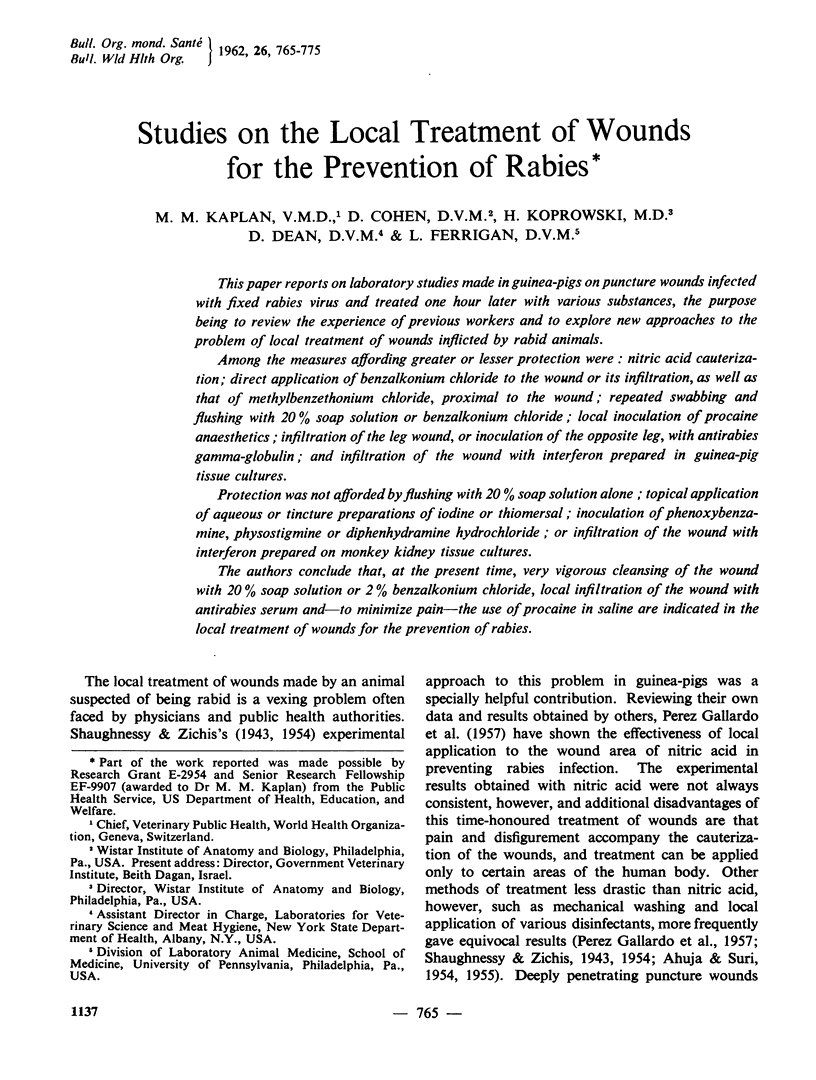
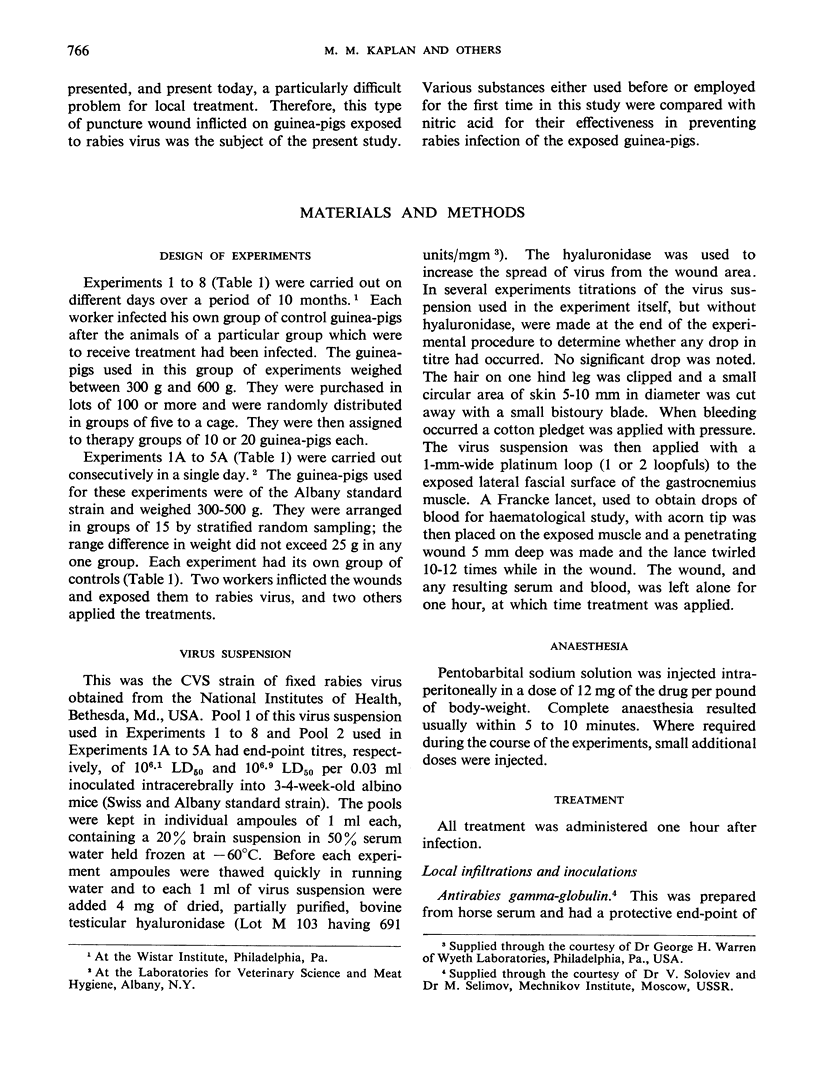
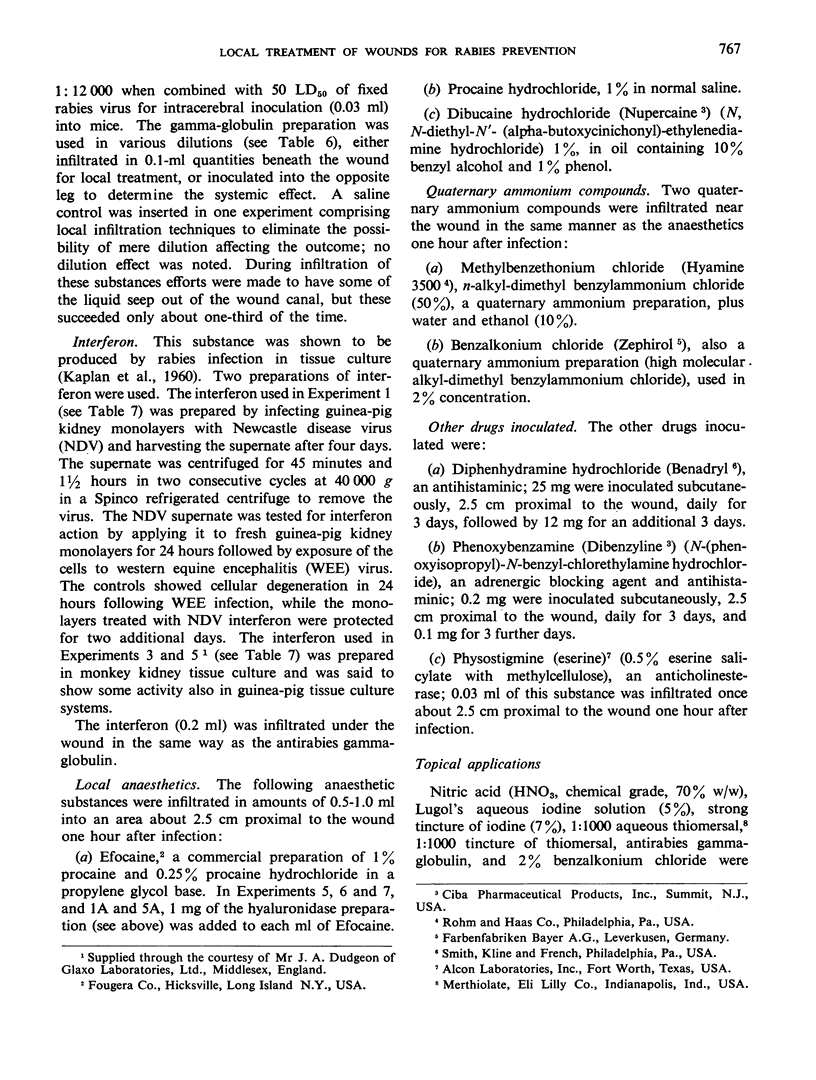
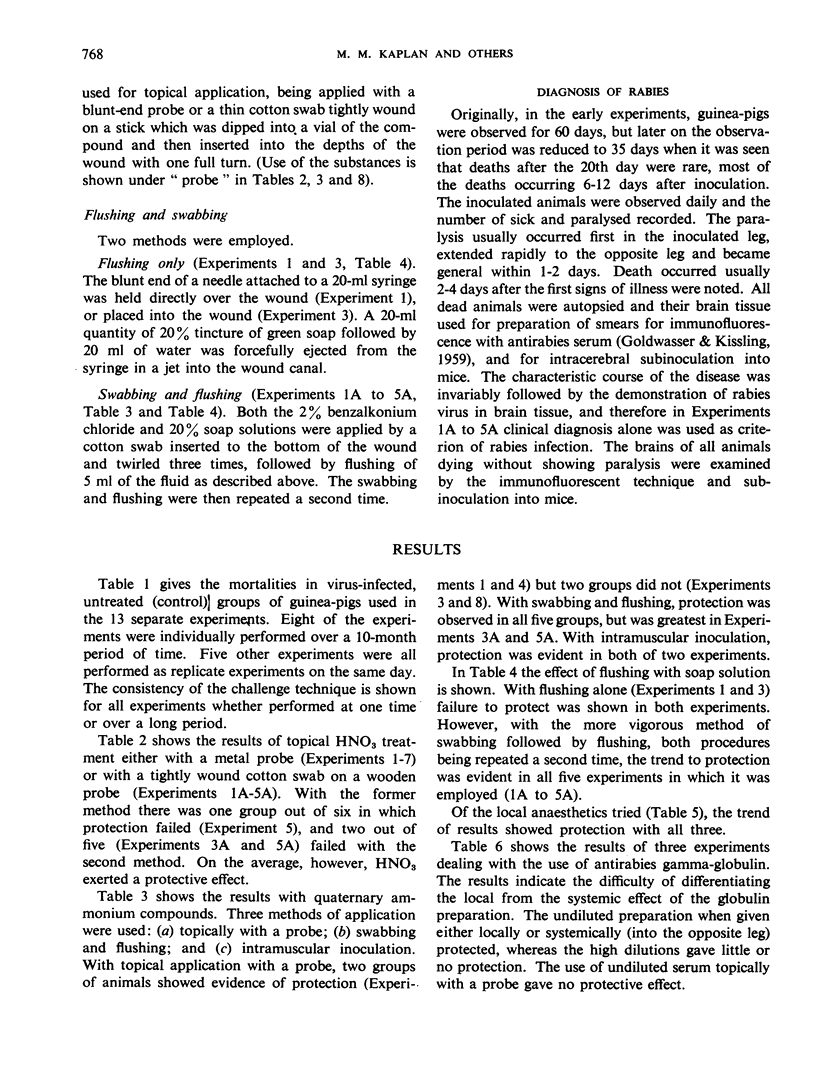
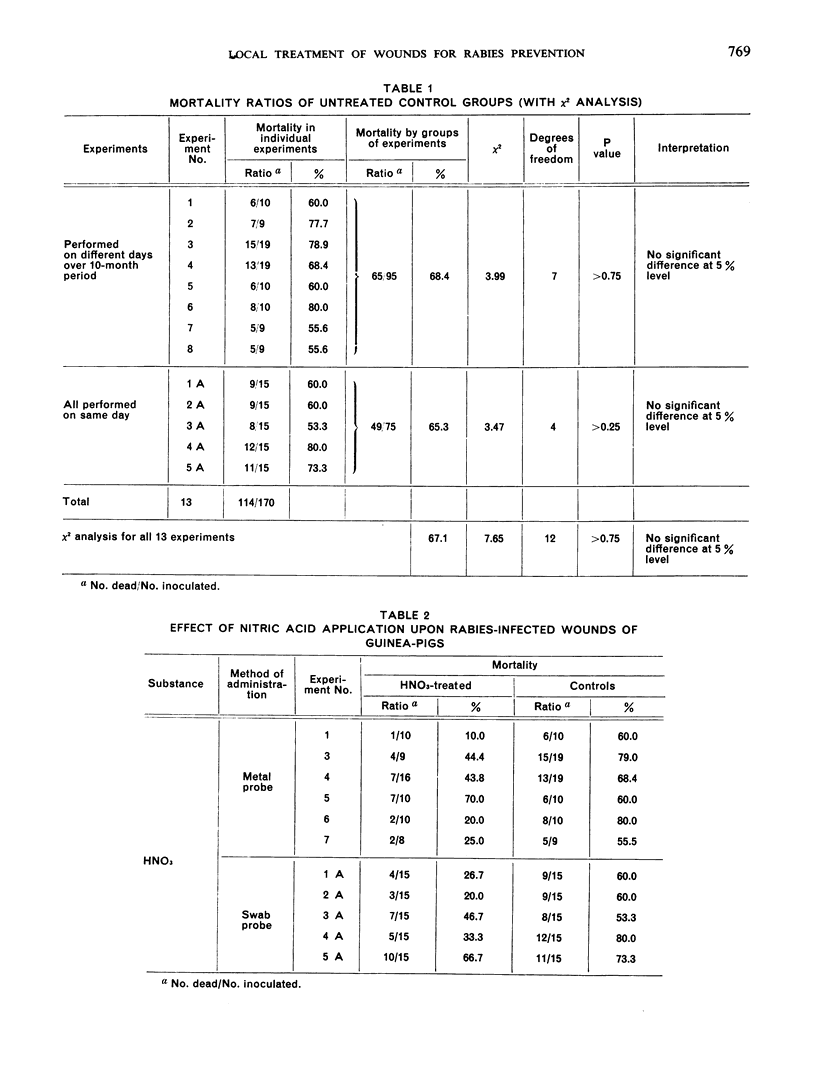
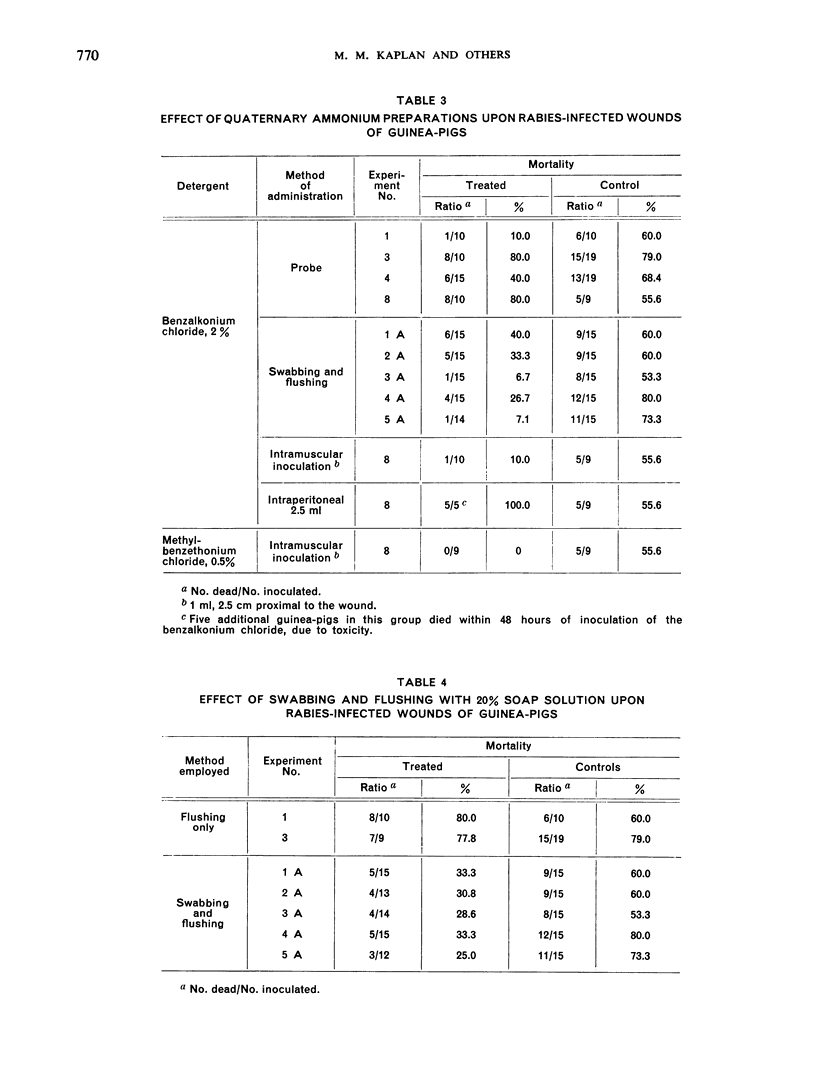
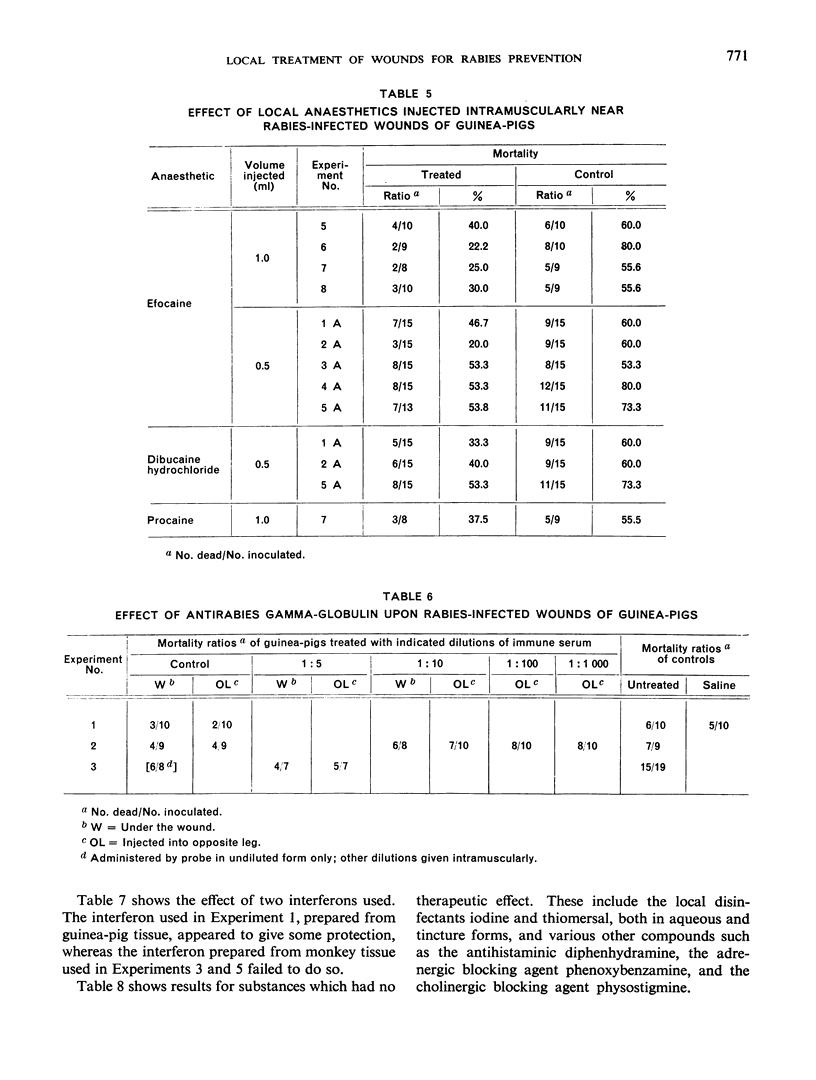
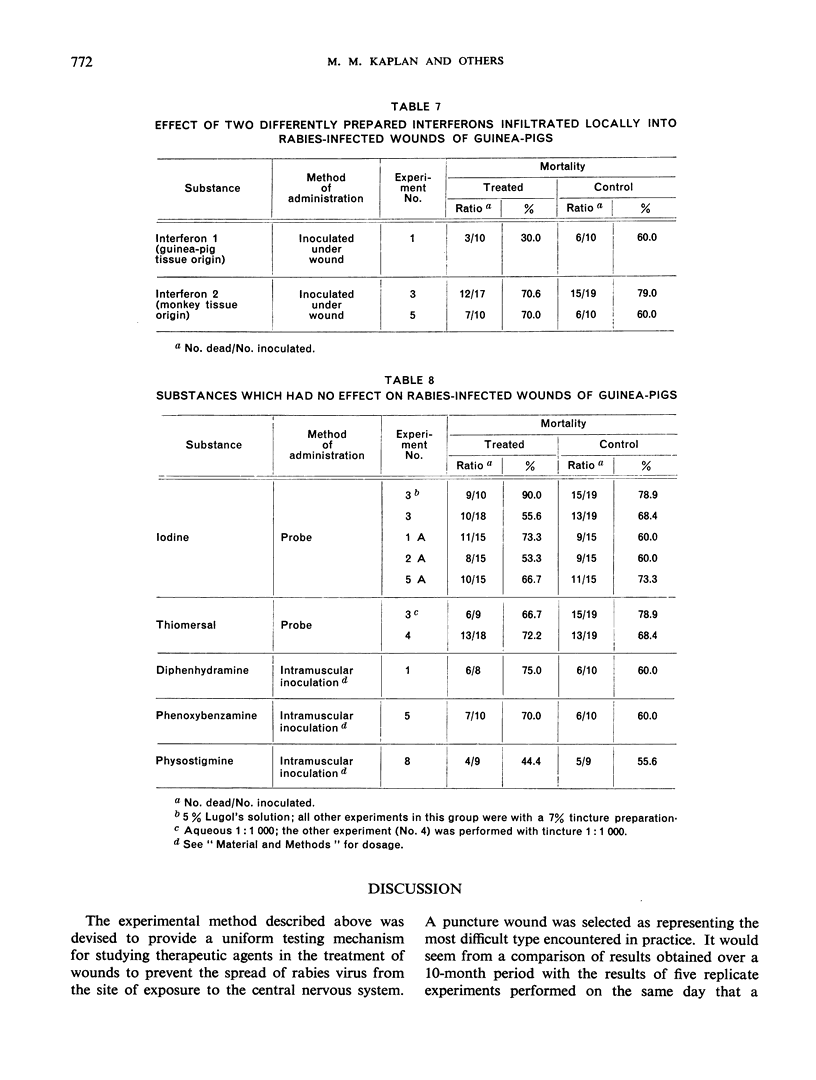
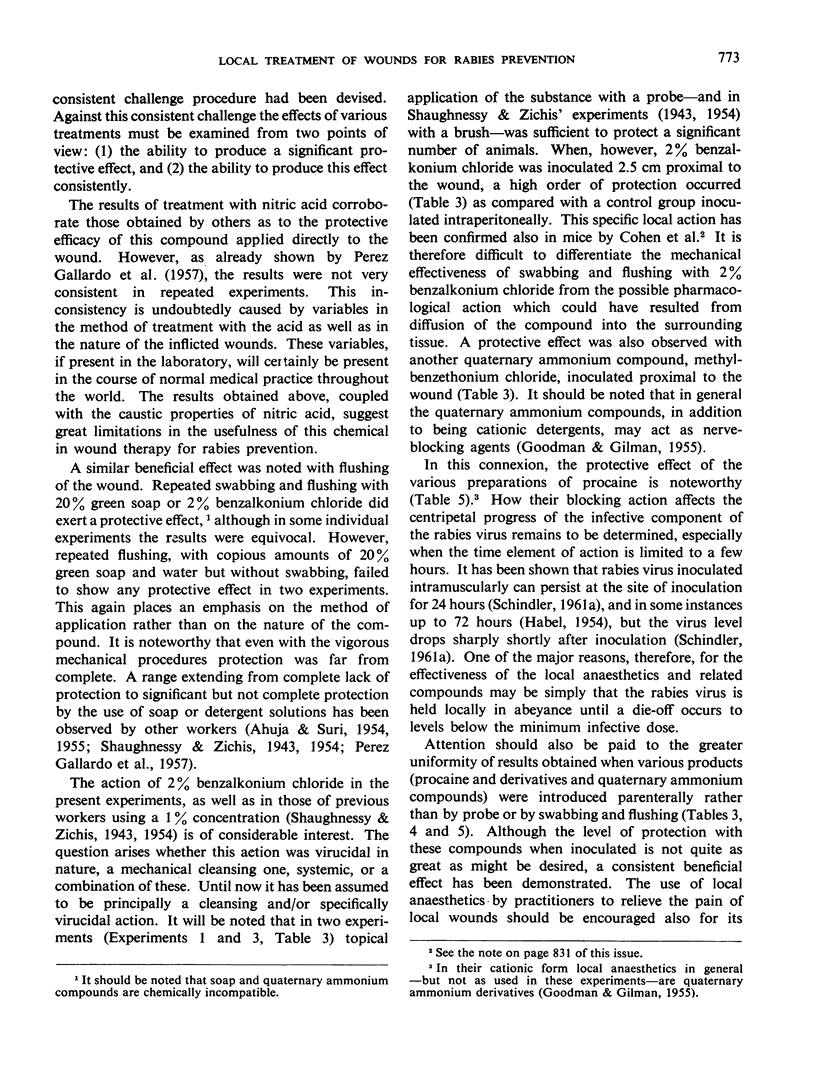
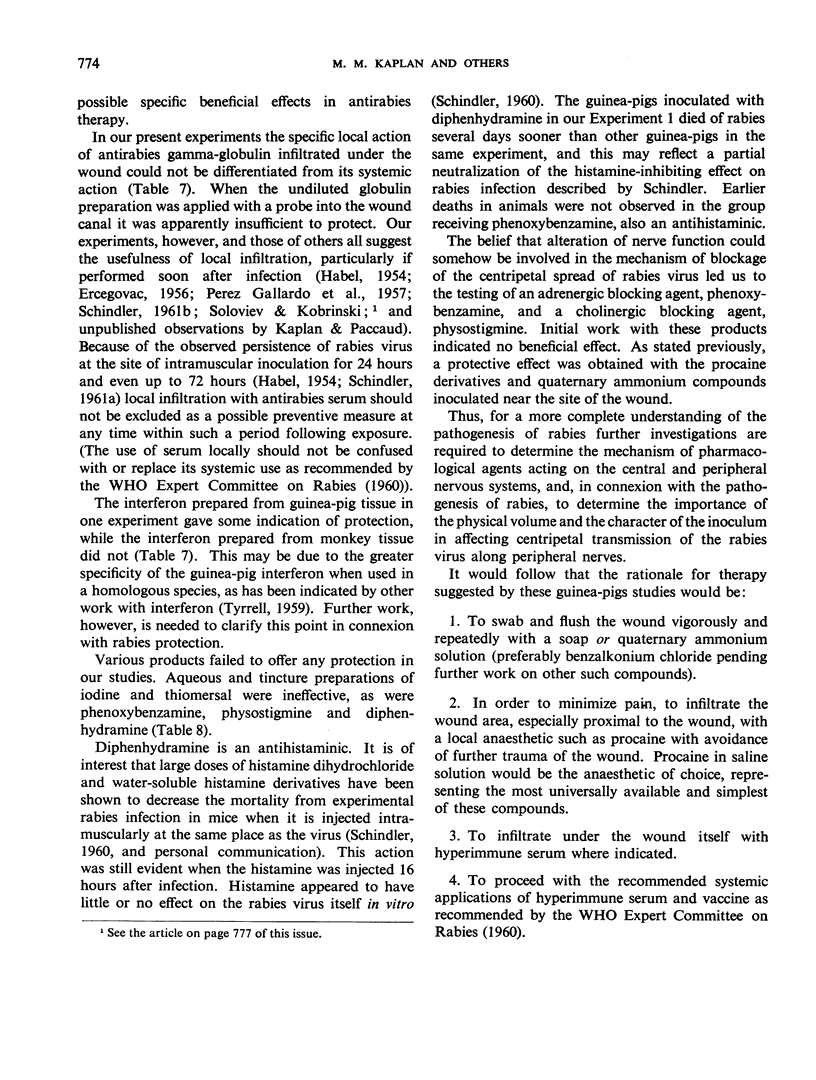
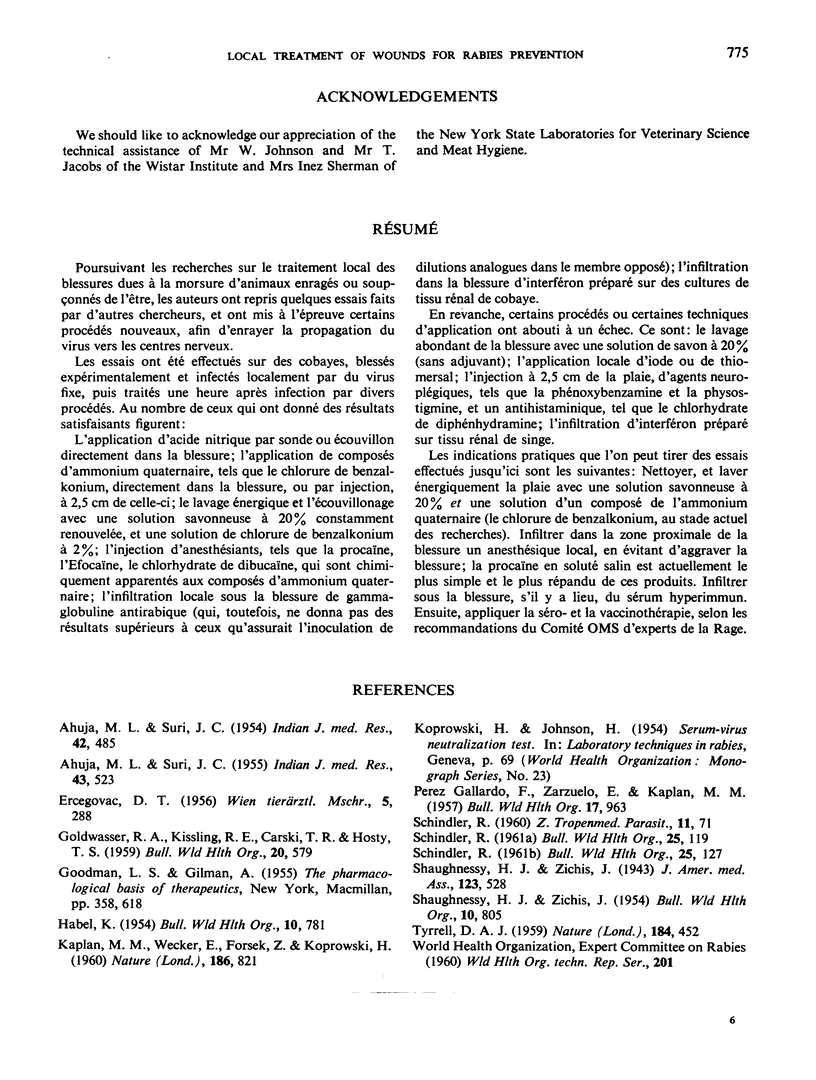
Selected References
These references are in PubMed. This may not be the complete list of references from this article.
- AHUJA M. L., SURI J. C. Local treatment of bites inflicted by rabid animals. Indian J Med Res. 1954 Jul;42(3):485–488. [PubMed] [Google Scholar]
- AHUJA M. L., SURI J. C. [Antirabies treatment]. Indian J Med Res. 1955 Jul;43(3):523–529. [PubMed] [Google Scholar]
- GOLDWASSER R. A., KISSLING R. E., CARSKI T. R., HOSTY T. S. Fluorescent antibody staining of rabies virus antigens in the salivary glands of rabid animals. Bull World Health Organ. 1959;20:579–588. [PMC free article] [PubMed] [Google Scholar]
- HABEL K. Antiserum in the prophylaxis of rabies. Bull World Health Organ. 1954;10(5):781–788. [PMC free article] [PubMed] [Google Scholar]
- KAPLAN M. M., WECKER E., FORSEK Z., KOPROWSKI H. An indicator plaque-forming system for demonstration of interference by non-cytocidal strains of rabies virus. Nature. 1960 Jun 4;186:821–822. doi: 10.1038/186821a0. [DOI] [PubMed] [Google Scholar]
- PEREZ GALLARDO F., ZARZUELO E., KAPLAN M. M. Local treatment of wounds to prevent rabies. Bull World Health Organ. 1957;17(6):963–978. [PMC free article] [PubMed] [Google Scholar]
- SCHINDLER R. [Studies on the significance of a salivary factor present in carnivorous animals with hyaluronidase-like effect for the transmission of rabies. Part II]. Z Tropenmed Parasitol. 1960 Apr;11:71–109. [PubMed] [Google Scholar]
- SHAUGHNESSY H. J., ZICHIS J. Treatment of wounds inflicted by rabid animals. Bull World Health Organ. 1954;10(5):805–813. [PMC free article] [PubMed] [Google Scholar]
- TYRRELL D. A. Interferon produced by cultures of calf kidney cells. Nature. 1959 Aug 8;184(Suppl 7):452–453. doi: 10.1038/184452a0. [DOI] [PubMed] [Google Scholar]


